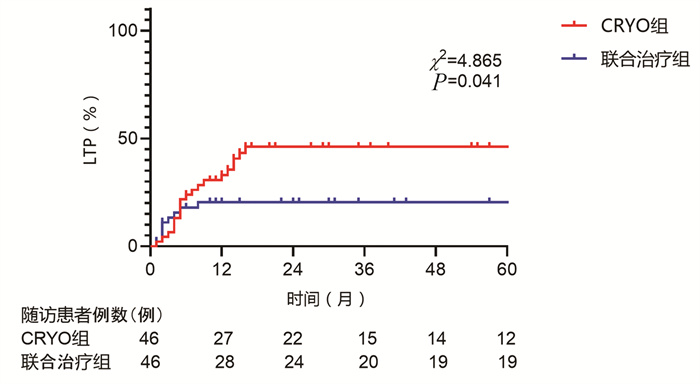| [1] |
LI X, LIANG P. Current status and advances in ultrasound-guided thermal ablation for hepatocellular carcinoma[J]. J Clin Hepatol, 2021, 37(3): 510-514. DOI: 10.3969/j.issn.1001-5256.2021.03.004. |
| [2] |
TOKUSHIGE K, HASHIMOTO E, HORIE Y, et al. Hepatocellular carcinoma based on cryptogenic liver disease: The most common non-viral hepatocellular carcinoma in patients aged over 80 years[J]. Hepatol Res, 2015, 45(4): 441-447. DOI: 10.1111/hepr.12372. |
| [3] |
MIRICI-CAPPA F, GRAMENZI A, SANTI V, et al. Treatments for hepatocellular carcinoma in elderly patients are as effective as in younger patients: A 20-year multicentre experience[J]. Gut, 2010, 59(3): 387-396. DOI: 10.1136/gut.2009.194217. |
| [4] |
ZHANG YX, ZHANG XH, YU XL, et al. Prognosis of microwave ablation for hepatocellular carcinoma: Does age make a difference?[J]. Int J Hyperthermia, 2020, 37(1): 688-695. DOI: 10.1080/02656736.2020.1778198. |
| [5] |
ZHUO ET, ZHENG YC, FU GH, et al. Clinical effect of transcatheter arterial chemoembolization combined with percutaneous ethanol injection in elderly patients with primary liver cancer[J]. Chin J Gerontol, 2021, 41(14): 2956-2958. DOI: 10.3969/j.issn.1005-9202.2021.14.013. |
| [6] |
LI Z, ZHANG K, LIN SM, et al. Radiofrequency ablation combined with percutaneous ethanol injection for hepatocellular carcinoma: a systematic review and meta-analysis[J]. Int J Hyperthermia, 2017, 33(3): 237-246. DOI: 10.1080/02656736.2016.1237681. |
| [7] |
HUANG H, LIANG P, YU XL, et al. Safety assessment and therapeutic efficacy of percutaneous microwave ablation therapy combined with percutaneous ethanol injection for hepatocellular carcinoma adjacent to the gallbladder[J]. Int J Hyperthermia, 2015, 31(1): 40-47. DOI: 10.3109/02656736.2014.999017. |
| [8] |
WANG XZ, WANG ZX, YANG YP. The value of cryoablation combined with percutaneous ethanol injection in the treatment of liver cancer[J]. Hebei Med J, 2012, 34(15): 2274-2276. DOI: 10.3969/j.issn.1002-7386.2012.15.014. |
| [9] |
WANG C, WANG H, YANG W, et al. Multicenter randomized controlled trial of percutaneous cryoablation versus radiofrequency ablation in hepatocellular carcinoma[J]. Hepatology, 2015, 61(5): 1579-1590. DOI: 10.1002/hep.27548. |
| [10] |
WANG H, LITTRUP PJ, DUAN Y, et al. Thoracic masses treated with percutaneous cryotherapy: Initial experience with more than 200 procedures[J]. Radiology, 2005, 235(1): 289-298. DOI: 10.1148/radiol.2351030747. |
| [11] |
DINDO D, DEMARTINES N, CLAVIEN PA. Classification of surgical complications: A new proposal with evaluation in a cohort of 6336 patients and results of a survey[J]. Ann Surg, 2004, 240(2): 205-213. DOI: 10.1097/01.sla.0000133083.54934.ae. |
| [12] |
AHMED M, SOLBIATI L, BRACE CL, et al. Image-guided tumor ablation: Standardization of terminology and reporting criteria--a 10-year update[J]. Radiology, 2014, 273(1): 241-260. DOI: 10.1148/radiol.14132958. |
| [13] |
KUDO M. Recent advances in systemic therapy for hepatocellular carcinoma in an aging society: 2020 update[J]. Liver Cancer, 2020, 9(6): 640-662. DOI: 10.1159/000511001. |
| [14] |
European Association for the Study of the Liver. EASL Clinical Practice Guidelines: Management of hepatocellular carcinoma[J]. J Hepatol, 2018, 69(1): 182-236. DOI: 10.1016/j.jhep.2018.03.019. |
| [15] |
RHO SY, LEE HW, KIM DY, et al. Current status of therapeutic choice and feasibility for patients with hepatocellular carcinoma aged ≥ 70 years: A nationwide cancer registry analysis[J]. J Hepatocell Carcinoma, 2021, 8: 321-332. DOI: 10.2147/JHC.S306507. |
| [16] |
GALUN D, BOGDANOVIC A, ZIVANOVIC M, et al. Short- and long-term outcomes after hepatectomy in elderly patients with hepatocellular carcinoma: An analysis of 229 cases from a developing country[J]. J Hepatocell Carcinoma, 2021, 8: 155-165. DOI: 10.2147/JHC.S297296. |
| [17] |
KIM JM, CHO BI, KWON CH, et al. Hepatectomy is a reasonable option for older patients with hepatocellular carcinoma[J]. Am J Surg, 2015, 209(2): 391-397. DOI: 10.1016/j.amjsurg.2013.06.010. |
| [18] |
YU B, DING Y, LIAO X, et al. Radiofrequency ablation versus surgical resection in elderly patients with early-stage hepatocellular carcinoma in the era of organ shortage[J]. Saudi J Gastroenterol, 2018, 24(6): 317-325. DOI: 10.4103/sjg.SJG_261_18. |
| [19] |
EI S, HIBI T, TANABE M, et al. Cryoablation provides superior local control of primary hepatocellular carcinomas of > 2 cm compared with radiofrequency ablation and microwave coagulation therapy: An underestimated tool in the toolbox[J]. Ann Surg Oncol, 2015, 22(4): 1294-1300. DOI: 10.1245/s10434-014-4114-7. |
| [20] |
DUNNE RM, SHYN PB, SUNG JC, et al. Percutaneous treatment of hepatocellular carcinoma in patients with cirrhosis: A comparison of the safety of cryoablation and radiofrequency ablation[J]. Eur J Radiol, 2014, 83(4): 632-638. DOI: 10.1016/j.ejrad.2014.01.007. |
| [21] |
SATO M, TATEISHI R, YASUNAGA H, et al. Mortality and morbidity of hepatectomy, radiofrequency ablation, and embolization for hepatocellular carcinoma: A national survey of 54, 145 patients[J]. J Gastroenterol, 2012, 47(10): 1125-1133. DOI: 10.1007/s00535-012-0569-0. |
| [22] |
SHⅡNA S, TATEISHI R, ARANO T, et al. Radiofrequency ablation for hepatocellular carcinoma: 10-year outcome and prognostic factors[J]. Am J Gastroenterol, 2012, 107(4): 569-577; quiz 578. DOI: 10.1038/ajg.2011.425. |
| [23] |
LI Z, ZHANG C, LOU C, et al. Comparison of percutaneous cryosurgery and surgical resection for the treatment of small hepatocellular carcinoma[J]. Oncol Lett, 2013, 6(1): 239-245. DOI: 10.3892/ol.2013.1314. |
| [24] |
ORLACCHIO A, BAZZOCCHI G, PASTORELLI D, et al. Percutaneous cryoablation of small hepatocellular carcinoma with US guidance and CT monitoring: initial experience[J]. Cardiovasc Intervent Radiol, 2008, 31(3): 587-594. DOI: 10.1007/s00270-008-9293-9. |
| [25] |
TAKAHASHI H, MIZUTA T, KAWAZOE S, et al. Efficacy and safety of radiofrequency ablation for elderly hepatocellular carcinoma patients[J]. Hepatol Res, 2010, 40(10): 997-1005. DOI: 10.1111/j.1872-034X.2010.00713.x. |
| [26] |
KAIBORI M, YOSHⅡ K, HASEGAWA K, et al. Treatment optimization for hepatocellular carcinoma in elderly patients in a Japanese Nationwide Cohort[J]. Ann Surg, 2019, 270(1): 121-130. DOI: 10.1097/SLA.0000000000002751. |
| [27] |
HINSHAW JL, LEE FT Jr. Cryoablation for liver cancer[J]. Tech Vasc Interv Radiol, 2007, 10(1): 47-57. DOI: 10.1053/j.tvir.2007.08.005. |
| [28] |
VANDENBROUCKE F, VANDEMEULEBROUCKE J, BULS N, et al. Can tumor coverage evaluated 24 h post-radiofrequency ablation predict local tumor progression of liver metastases?[J]. Int J Comput Assist Radiol Surg, 2018, 13(12): 1981-1989. DOI: 10.1007/s11548-018-1765-z. |








 DownLoad:
DownLoad:

